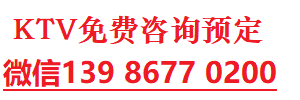本文目录一览:
用today造句分别用i he she
肯定:I go to school everyday.
否定:I don't go to school everyday.
疑问:Do I go to school everyday?
肯定:You go to school everyday.
否定:You don't go to school everyday.
疑问:Do You go to school everyday?
肯定:He go to school everyday.
否定:He doesn't go to school everyday.
疑问:Does he go to school everyday?
肯定:She go to school everyday.
否定:She doesn't go to school everyday.
疑问:Does She go to school everyday?
肯定:We go to school everyday.
否定:We don't go to school everyday.
疑问:Do we go to school everyday?
肯定:They go to school everyday.
否定:They don't go to school everyday.
疑问:Do they go to school everyday?
有什么难度?错了指点下
用today.fine.day.a.what造句
What a fine day today!
此为感叹句:
主要today造句的表现形式只有两种,即what和how引导的感叹句。what修饰名词,how修饰形容词、副词或动词。
由what引导的感叹句what修饰名词或名词短语today造句,有以下两种形式:
1. What+a(an)+(形容词)+单数可数名词+主语+谓语!如:
What an apple this is!
What a fine day it is!
2. What+(形容词)+可数名词复数或不可数名词+主语+谓语!
What kind women they are!
What nice music it is!
由How引导的感叹句
how用来修饰形容词、副词或动词。其结构是:How+形容词(副词)+主语+谓语! How hard the worker are working!
How clever the girl is!
How quickly the boy is writing!
注意:当how修饰动词时,动词不跟着感叹词提到主语之前。
How the runner runs!
what与how引导的感叹句,一般情况下可以相互转换,转换后意义不变。如:
What an interesting story it is!==How interesting the story is!
what a beautiful bulding it is!==How beautiful the building is!
在口语中,感叹句的主语和谓语常常省略。如:
What a nice present!(省略it is)
How disappointed!(省略she is或其它可作本句主、谓的词语)
用法
感叹句多以how或what引导,但在口语中,还有一些特殊的感叹句表达形式。
1.以副词here, there, in开头的感叹句。
Here comes the bus! 公共汽车来了!
There they are! 他们在那儿呢!
2.以疑问词who开头,表示惊奇。
Who else will read such a book! 谁还会读这样的书!
3.以情态动词may开头,表示愿望。
May you both be happy! 祝二位幸福。
May you succeed! 祝你成功!
4.否定疑问句用作感叹句时,它的意义是肯定的;但肯定疑问句用作感叹句在美国英语中比较常见。
Aren’t they sweet! 他们多可爱啊!
Am I hungry! today造句我饿极了!
5.一些短语用作感叹句。
Dear me! 哎呀! My goodness! 嗳呀!
None of your nonsense! 不要胡说了!
6.一些作表语的成分用作感叹句。
Just my luck! 又倒霉了!
Sorry, my mistake! 对不起,是我的错!
感叹句如何变为间接引语
直接引语是感叹句时,若要变作间接引语,通常用引述动词tell, exclaim等。如:
■ “What a brave boy you are!” she told him. “你是一个多么勇敢的男孩子啊!”她告诉他说。
→She told him what a brave boy he wag. 她告诉他说他是一个多么勇敢的男孩子。
■He said, “Hurrah! My friend is come.” 他说道,“乌拉!我的朋友来了。”
→He exclaimed with delight that his friend had come. 他欢呼他的朋友来了。(引述动词用exclaim, 并加状语with delight)
当然,也可用其他一些引述动词。如:
■He said, “Alas! How foolish I have been!” 他说道,“哎,我多傻啊!”
→He confessed with regret that he had been very foolish. 他痛悔地承认他太傻了。(引述动词用confess加状语with regret)
■“What a crime he has committed!” she said. “他犯了多大的罪啊!”她说道。
→She didn’t know what a crime he had committed. 她不知道他犯了那么大的罪。(引述动词用know的否定式)
有时也可以不用引述动词,如:
■“How fast she can run!” he says. “她竞能跑得那样快!”他说道。
→It’s incredible how fast she can run. 她跑得如此之快令人不可置信。(用it’s incredible表示说话人的神情)
■He said to them all, “Good-bye, my friends!” 他对他们说道,“再见,我的朋友们!”
→He bade good-bye to all his friends. 他向他的所有朋友道别。(这里连间接引语也没有了)
关于感叹句 what 和 how 的区别:
一、 由"what"引导的感叹句:"what"意为"多么"用作定语,修饰名词(被强调部分),单数可数名词前要加不定冠词a/an,复数可数名词或不可数名词前不用冠词。这类句子的结构形式是:
what+(a/an)+adj.+n.+主语+谓语+(it is).
如: ① What a clever girl she is! 多么聪明的姑娘呀!
二、由"how"引导的感叹句:"how"意为"多么",用作状语,修饰形容词或副词(被强调部分)。如果修饰形容词,则句中的谓语动词用系动词;如果how修饰副词,则句中的谓语动词用行为动词,这类句子的结构形式是:
How+adj.(adv.)+主语+谓语+(it is).
如:① How cold it is today!
今天多么冷呀!
三、在表示同一意义时,英语感叹既可用"what"引导,也可用"how"引导。如:
① What a hot day it is!
How hot the day is !
四、感叹句在表示激动强烈的感情时,口语中常常采用省略句,其后面的主语和谓语往往略去不讲。
如:① What a fine day! 多么晴朗的天呀!
2 用法
感叹句多以how或what引导,但在口语中,还有一些特殊的感叹句表达形式。
1.以副词here, there, in开头的感叹句。
Here comes the bus! 公共汽车来了!
There they are! 他们在那儿呢!
2.以疑问词who开头,表示惊奇。
Who else will read such a book! 谁还会读这样的书!
3.以情态动词may开头,表示愿望。
May you both be happy! 祝二位幸福。
May you succeed! 祝你成功!
4.否定疑问句用作感叹句时,它的意义是肯定的;但肯定疑问句用作感叹句在美国英语中比较常见。
Aren’t they sweet! 他们多可爱啊!
I am hungry! 我饿极了!
5.一些短语用作感叹句。
Dear me! 哎呀! My goodness! 嗳呀!
None of your nonsense! 不要胡说了!
6.一些作表语的成分用作感叹句。
Just my luck! 又倒霉了!
Sorry, my mistake! 对不起,是我的错!
7.以从句表示的感叹句。例如:
As if were my fault!好像是我的错似的!
To think a scandal of this sort should be going on under my roof!真想不到这种丑事竟然出在我们家里!
today怎么读
读法:英 [tə'deɪ]、美 [tə'deɪ]。
释义:
1、 n. 今天;当今。
2、adv. 今天;当今。
3、adj. 现在的。
造句:
1、Today is my birthday.
今天是我的生日。
2、Today is Thursday.
今天是星期四。
用法
1、today用作不可数名词时,意思是“今天”,只指白天,不指黑夜。
2、today一般用作主语,用作定语时多用其所有格。
3、today等于on this day,故其前不可再加介词on。
4、today用作副词时,表示“在今天,在今日”,没有比较级和最高级。
5、today用在间接引语中,应改为that day。













